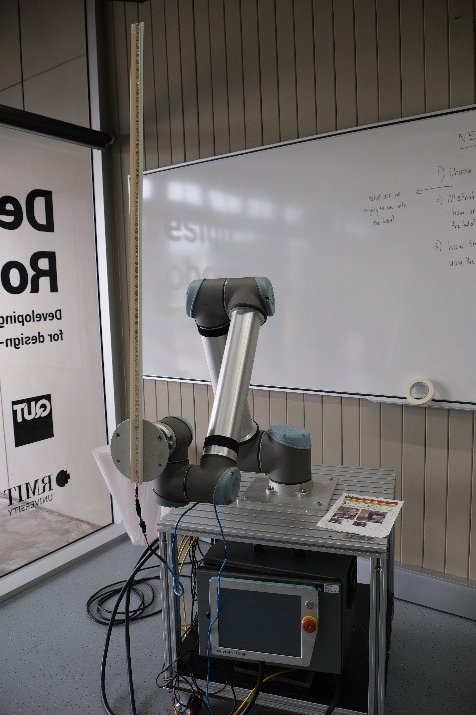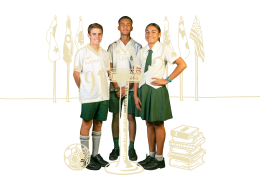Leo Lin (Year 12) reflects on his recent QUT STEM Internship
Share this
Recently Grace Belson & Leo Lin (Year 12), were awarded a place in the QUT STEM Research Internship program. 2020. This program is very competitive with over 450 quality applicants from across the country this year.
Leo was one of 3 students selected to travel to QUT and participate in the research project: Design Robotics Placement: Exploring creative applications of robotic technologies. On this project Leo programmed a robotic arm to generate unique ‘light-painting’ images as three-dimensional data visualisations.
Grace was one of 2 students selected to work on: Saliva and Liquid Biopsy Translational Research Team Placement: Non-invasive health tests to deliver better human health outcomes in the 21st Century. On this project Grace will help to develop non-invasive methods to test for some of our most common diseases
Unfortunately due to COVID 19- Grace’s Internship has been postponed, however, Leo reflects on his Internship below:
“In closing, congratulations to our Year 12 2019 graduating cohort. As many of you would have seen in the press, the TAS academic results were simply outstanding in 2019, as they have been in previous years.”
Fancy tech and floating faces? — Design Robotics
By Leo Lin
Have you ever wondered what it would look like to have your face floating in the middle of a room? Well that question is exactly what I have answered.
Over the past week, the QUT Young Accelerators program has allowed me to take part in a research internship with Dr Jared Donovan’s Design Robotics group, which aims to develop new ways to use robots in design-led manufacturing (Design Robotics, 2020). During this time, my fellow interns, Kate Wright and Callum Wishart and I, had the opportunity to visit two research facilities, as well as conduct our very own research project on light painting with robotic arms.
My light painted face
We first visited the ARM (Advanced Robotics for Manufacturing) Hub, where researcher Amelia Luu was kind enough to explain that the team there were collaborating with sculpture manufacturer UAP (Urban Art Project) to automate repetitive or difficult tasks, such as linear polishing or hole drilling (ARM Hub, 2020).
Afterwards, at Dr David Pyle’s photogrammetry lab, he showed various sized photogrammetry setups, from a huge frame with 80 cameras capable of scanning an entire human down to an automated single camera setup which can scan minute details on coral a few centimetres in diameter.
We then focused on light painting, which involves taking a long exposure photograph while moving a bright light in front of the camera. When the image develops, the light will form a trail along the path it was moved in, essentially ‘painting’ a streak on the final image. To do this, we are using a precise robotic arm which is holding a strip of LEDs, allowing us to create coloured images within the light painting. At first, we tested this method with some simple graphs of the Australian population. We then moved on to some pixel art and finished off with images of our faces, which ended up eerily floating in the room.

The robot and LED strip we used
Light painting with robots essentially gives the world a new medium to create legible and meaningful data visualisations. Rather than taking a photo and using post-processing tools to overlay graphics onto an existing image, a collaborative (safe to interact with) robot can be taken to the location of interest where it can directly generate the graphics via a light painting. This method creates a more realistic image than post-processing and some examples of its use are painting a graph of CO2 emissions on a bridge overlooking a motorway or drawing statistics about homelessness at a shelter for the homeless. This allows the data to show a message, just as my research group showed the neglect of the indigenous people by plotting the population of both colonial and indigenous Australians.
The visit to the ARM Hub and Dr Pyle’s photogrammetry lab made me realise that robots are not here to replace us, but to help us. These research facilities both use robotics to automate repetitive and time-consuming tasks, allowing the researchers to focus on more complex tasks where the human mind is crucial, such as critical thinking. The light painting project is similar, as the robot gives creatives a new tool to aid their work. Knowing this has solidified my goal to work in the technology industry so I can make people’s lives easier.
Now if you would like to see your face floating around in a room or want to make everyone’s lives better, then consider taking a pathway in STEM. It will lead you to do wonderful things, just like the researchers at the ARM Hub or the photogrammetry lab, and you will not regret it.
references
ARM Hub. (2020). ARM Hub. Retrieved from ARM Hub: https://www.armhub.com.au/
Design Robotics. (2020). About. Retrieved from Design Robotics: https://www.designrobotics.net/about/





